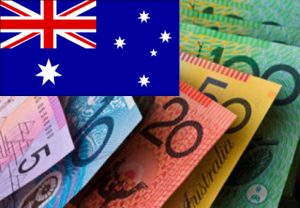Australian Dollar weakens slightly
24 October 2016 by News DeskAustralian Dollar meanwhile was weakened slightly by a slip in demand for risky currencies.
 Australian Dollar was impacted by a fall in risk-sentiment over higher bets for a Fed interest rate hike in December, according to currency specialists TorFX
Australian Dollar was impacted by a fall in risk-sentiment over higher bets for a Fed interest rate hike in December, according to currency specialists TorFX
This risk-aversion has spurred investors into firming on the US Dollar.
The imminence of November’s US Presidential election has also left risky currencies unappealing, with investors eager to keep their investments in safer currencies until the election result passes.
New Zealand Dollar (NZD) – The Pound to New Zealand Dollar exchange rate was able to recover from its record-lows by the end of last week, but GBP NZD remained soft.
The ‘Kiwi’ became the most appealing currency in the risky commodity bloc last week, due to strong commodity news and poor data weighing on the Australian Dollar.
GBP/NZD slipped as markets opened this week, despite weakening demand for risky currencies.
Australian Dollar weakens slightly
Pound Sterling (GBP) – The Pound was left largely limp during Friday trade as bullishness following slightly positive Brexit news faded.
Friday’s session saw the publication of Britain’s latest public sector net borrowing scores, which indicated that the UK government borrowed £10.6b in September. Forecasters had expected an £8.5b borrowing deficit, while some had expected Sterling’s low value to lighten the load further.
Overall, the score left investors with little to cheer over, but Sterling trended flatly against some majors regardless as economic data has recently had a depleted effect on Pound trade.
US Dollar (USD) – The Pound to US Dollar exchange rate lost most of its weekly advances towards the end of last week, but was still able close Friday above its opening levels thanks to Tuesday’s Sterling surge.
Underwhelming data and general Brexit nerves weighed on Sterling towards the end of the week, while the US Dollar continued to trend strongly due to expectations for a December interest rate hike from the Federal Reserve.
Friday comments from San Francisco Fed President John Williams bolstered US Dollar demand further, as he kept hopes high by saying he’d support an interest rate hike in 2016 as well as a few in 2017.
Euro (EUR) – The Pound to Euro exchange rate edged slightly higher on Friday, ending the week’s trade on a two-week-high as the Euro remained soft following the latest statements from European Central Bank (ECB) President Mario Draghi.
While Draghi claimed the bank had not discussed tapering or extending its quantitative easing program, he indicated that policymakers would use data between now and the bank’s December policy meeting date to decide on what action to take next. As Draghi seemed shocked by the rumours of QE tapering, this led markets to believe that an extension was the most likely action to anticipate for December’s meeting.
Monday morning saw the publication of the Eurozone’s preliminary October PMI scores, which all came in above expectations and offered the Euro some support. Most notable was news that French Manufacturing had finally returned to growth and German Services had rebounded from a low 50.9 to 54.1. The Eurozone’s overall scores also beat expectations. Manufacturing scored 53.3, Services came in at 53.5 and the Composite result scored a solid 53.7.
Canadian Dollar (CAD) – The Pound to Canadian Dollar exchange rate ended last week’s trade session at a two week high as demand for the ‘Loonie’ slumped on an oil selloff.
As prices of oil, Canada’s biggest export, hit their highest levels in 2016 so far, investors indulged in a profit-taking selloff of the commodity, causing oil prices to slip. The Canadian Dollar was also weakened by Canada’s latest retail sales and Consumer Price Index (CPI) scores. Retail sales came in at -0.1% in August, while inflation slowed to 0.1% in September and only improved to 1.3% year-on-year.
While oil sentiment was solid, the selloff continued when markets opened on Monday after Iraq oil producers stated that they did not want to join OPEC’s planned oil output cap. As such, the Canadian Dollar continued to perform poorly on Monday.
Disclaimer: This update is provided by TorFX, a leading foreign exchange broker, its content is authorised for reuse by affiliates.
Learn more about the Australian Dollar – Contact TorFX: Get A Quote
Want to live and work Down Under? Click here for expert help: Skilled Migration to Australia
Want to get a job Down Under? Click here for expert help: How to Get a Job in Australia
Click here for expert help with travel visas: Travel Visas to Australia
Click here for tourist information about Australia: Visit Australia


